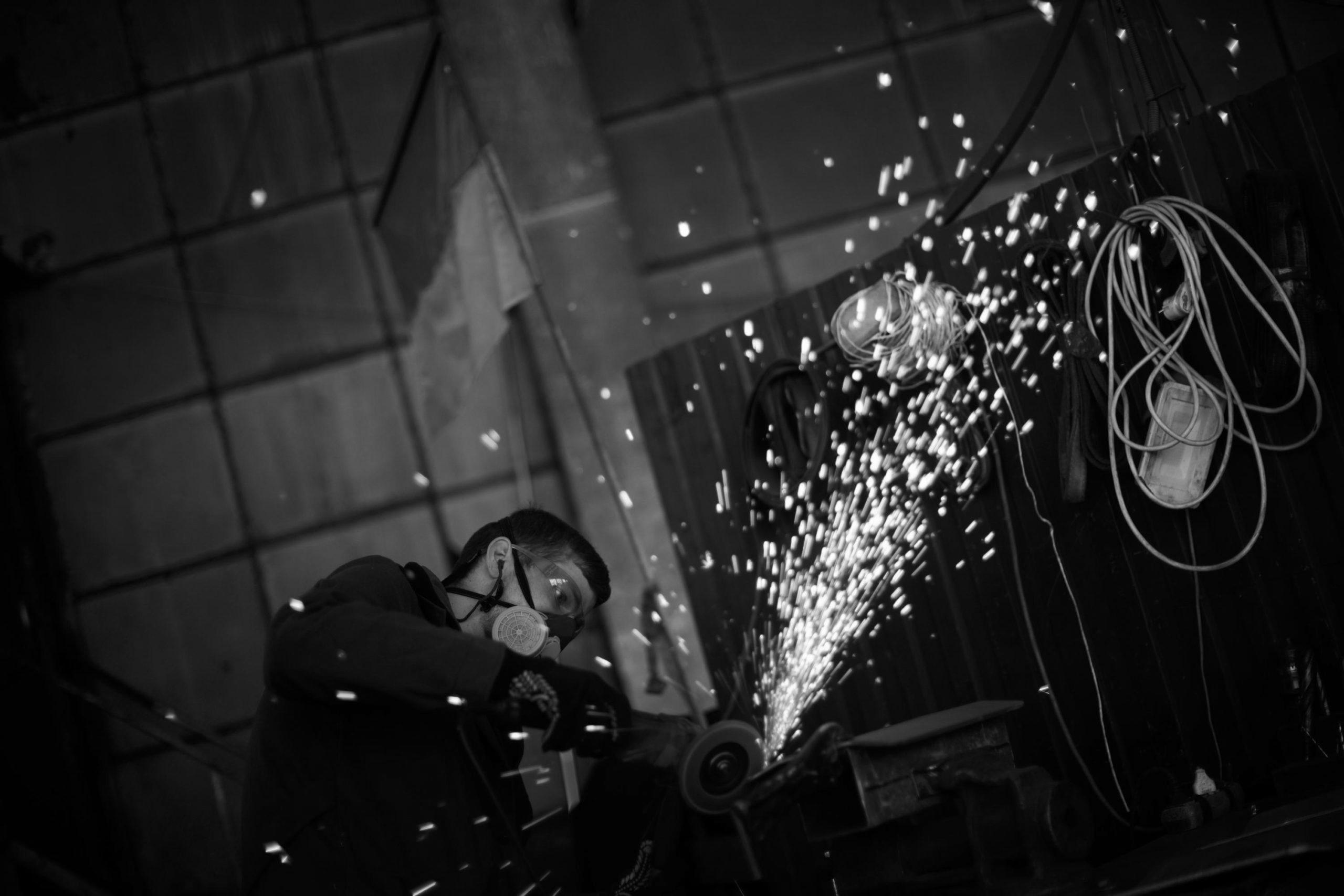Shield the body: Ukraine volunteers craft armor, camouflage
Warning: Undefined variable $post_id in /home/webpages/lima-city/booktips/wordpress_de-2022-03-17-33f52d/wp-content/themes/fast-press/single.php on line 26

2022-05-09 09:16:18
#Protect #body #Ukraine #volunteers #craft #armor #camouflage
ZAPORIZHZHIA, Ukraine (AP) — Sparks fly as a circular saw slices into steel, while welders close by work feverishly to the sound of blaring heavy metal. Upstairs, sewing machines clatter as women mark patterns on material being formed into bulletproof vests.
An old industrial complicated within the southeastern Ukrainian riverside metropolis of Zaporizhzhia has develop into a hive of activity for volunteers producing everything from physique armor and anti-tank obstacles to camouflage nets, moveable heating stoves and rifle slings for Ukrainian troopers preventing Russia’s invasion. One part focuses on autos, armor-plating some, converting others into ambulances. Another organizes meals and medical deliveries.
With the entrance line about 50 kilometers (30 miles) from town, some sections of the operation, such as the stitching of bulletproof vests, are working across the clock in shifts to satisfy demand. Crowdfunding has introduced in sufficient cash to purchase steel from Sweden, Finland and Belgium, which is lighter than native metal, organizers say, an important high quality for body armor.
The operation is the brainchild of native movie star Vasyl Busharov and his pal Hennadii Vovchenko, who ran a furniture-making business. They named it Palianytsia, a sort of Ukrainian bread whose title many Ukrainians say can't be pronounced properly by Russians.
The operation depends totally on volunteers, who now quantity more than 400 and are available from all walks of life, from tailors to craftsmen to attorneys. Aside from those involved in manufacturing, there are additionally drivers delivering humanitarian help and medical gear bought through donated funds.
“I really feel I am wanted right here,” said designer Olena Grekova, 52, taking a short break from marking fabric for vests.
When Russia invaded on Feb. 24, she was in Thailand in search of inspiration for her spring assortment. Initially, she stated, she puzzled whether it was an indication from God that she shouldn’t return. Her husband and two adult sons urged her to not.
“But I made a decision that I had to go back,” she mentioned.
She had recognized Busharov for years. Arriving dwelling on March 3, she gathered her tools the subsequent day and by March 5 was at Palianytsia. She’s been working there each day since, bar one, typically even at night.
Shifting from designing backless ballgowns to creating practical bulletproof vests was “a new expertise for me,” Grekova mentioned. However she sought suggestions from soldiers for her designs, which have armor plates added. Now she is helping to provide several versions, including a prototype summer vest.
In another part of the commercial advanced, 55-year-old Ihor Prytula was busy making a brand new camouflage web, winding pieces of dyed fabric through a string frame. A furniture-maker by trade, he joined Palianytsia in the beginning of the war. He had some military expertise, he said, so it was straightforward to get feedback from troopers on what they needed.
“We speak the identical language,” he stated.
For Prytula, the battle is personal. His 27-year-old son was killed in late March as he helped evacuate people from the northern city of Chernihiv.
“The war and demise, it’s bad, belief me, I know this,” he mentioned. “It’s dangerous, it’s tears, it’s sorrow.”
The call for volunteers went out as quickly as the struggle started. Busharov announced his challenge on Facebook on Feb. 25. The next day, 50 folks turned up. “Next day 150 folks, next day 300 people. ... And all collectively, we strive (to) defend our metropolis.”
They began out making Molovov cocktails in case Russian soldiers superior on Zaporizhzhia. In 10 days, they produced 14,000, he mentioned. Then they turned to producing anti-tank obstacles often called hedgehogs — three giant metal beams soldered together at angles — used as part of the city’s defenses. Quickly, Busharov and Vovchenko stated, they discovered one other pressing need: there weren’t sufficient bulletproof vests for Ukraine’s troopers.
However learning make one thing so specialised wasn’t simple.
“I wasn’t really linked with the military at all,” said Vovchenko. “It took two days and three sleepless nights to understand what must be done.”
The staff went through various kinds of metal, making plates and testing them to examine bullet penetration. Some didn’t supply enough safety, others have been too heavy to be practical. Then they had a breakthrough.
“It turns out that steel used for automotive suspension has superb properties for bullet penetration,” Vovchenko said, standing in entrance of 4 cabinets of check plates with various levels of bullet injury. The one made of car suspension steel showed dozens of bullet marks however none that penetrated.
The vests and everything else made at Palianytsia are supplied free to troopers who request them, as long as they will show they're in the army. Every plate is numbered and each vest has a label noting it isn't for sale.
To date, Palianytsia has produced 1,800 bulletproof vests in two months, Busharov stated, including there was a waiting list of around 2,000 more from all over Ukraine.
Vovchenko said they've heard about up to 300 people whose lives have been saved by the vests.
Knowing that's “extremely inspiring and it retains us going,” he said.
____
Inna Varenytsia in Zaporizhzhia, Ukraine, contributed.
___
Follow all AP tales on the battle in Ukraine at https://apnews.com/hub/russia-ukraine
Quelle: apnews.com